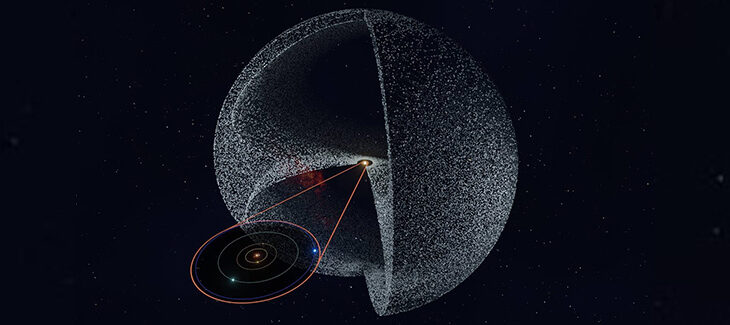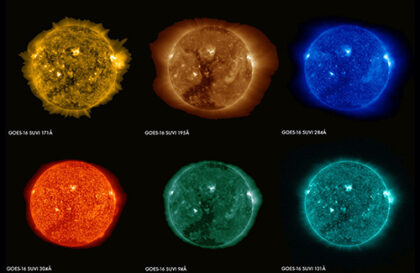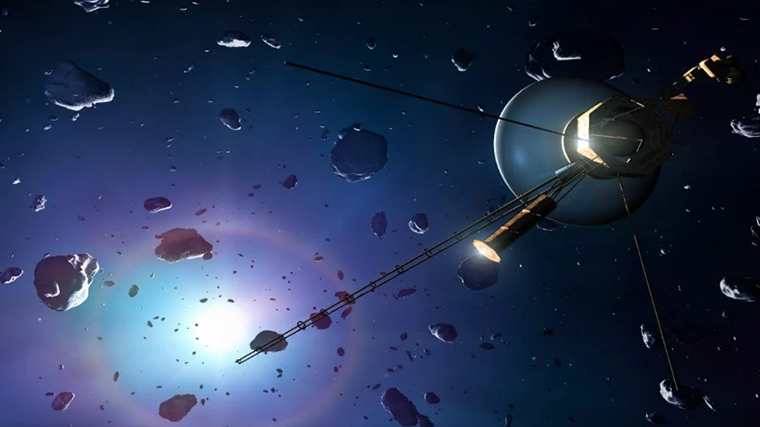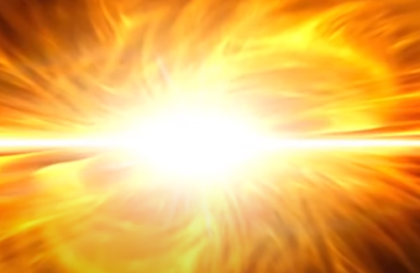Five spacecraft, including Voyagers, New Horizons and Pioneers, are heading towards the Oort clouds. But their energy sources will stop working hundreds of years before reaching the interior of the Cloud.
The Oort cloud is a theoretical envelope of icy objects first proposed by astronomer Jan Oort. It is located in the outermost part of the Solar System, beyond the Kuiper Belt, and is considered the source of most long-period comets. The cloud is roughly spherical and is estimated to contain trillions of objects, each about 100 km in diameter. The Oort cloud has an inner and outer region, and the internal extension is thought to be more concentrated in the ecliptic plane and merges with the Kuiper belt. Objects in the outer layer were thrown into extremely long elliptical or parabolic orbits due to gravitational interaction with young gas giants.
Where is the Oort Cloud located?
Credit: NASA
The Oort cloud, a massive shell of icy objects, is located in the outer reaches of our solar system. The Oort Cloud is a vast distance of 50,000 to 200,000 AU, about a quarter of the length to the nearest star. Because its outer boundary is not easily defined, the Oort Cloud is believed to be a region of vast area where the Sun’s gravitational pull is still greatest. Its inner boundaries begin at about 2,000 AU from the Sun and are at the edge between the Solar System and the Milky Way. The outer perimeter of the Oort Cloud can change as different stars pass by the Sun over millennia and is thought to define the cosmographic boundary of the Solar System.
What is the composition of the Oort Cloud?
The composition of the Oort Cloud mainly consists of such ices as water, methane, ethane, carbon monoxide, hydrogen cyanide, and asteroids. Oort cloud comets and the recent collision study of the Jupiter-family comet Tempel 1 originate from the original protosolar cloud. This is supported by the fact that long-period comets and comets of the Jupiter family have similar ratios of carbon and nitrogen isotopes. The diffuse disc can still supply material to the Oort cloud. Half the scattered objects in the disk move outward toward the Oort cloud, while a quarter drift inward toward Jupiter’s orbit. A quarter of scattered objects are thrown into hyperbolic orbits.
It is believed that the Oort Cloud may contain dwarf planets.
You can use the free astronomy app Sky Tonight to find comets reaching us from this distant region of space.
Banner image: Vito Technology, Inc
Image credit:
https://starwalk.space
https://smd-cms.nasa.gov






